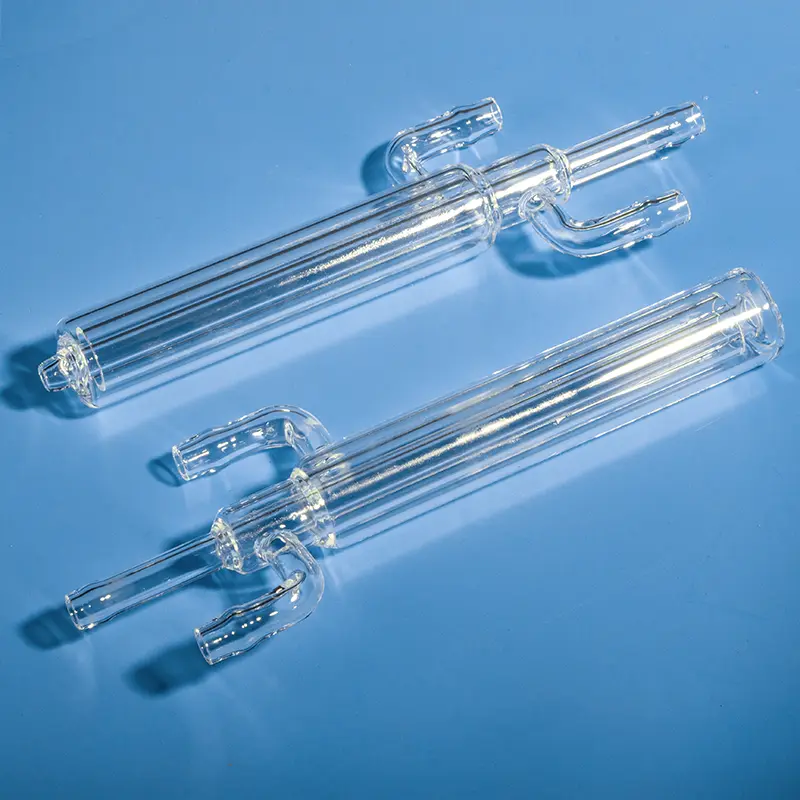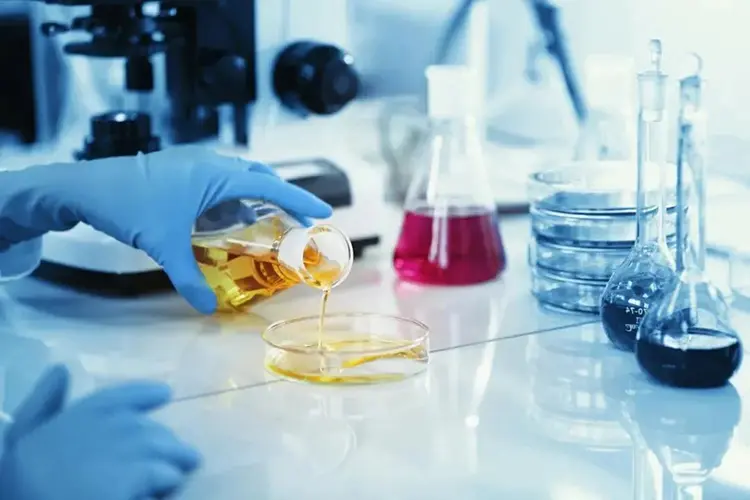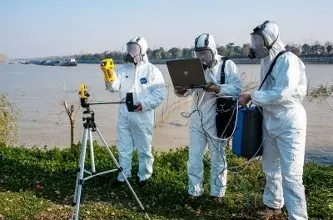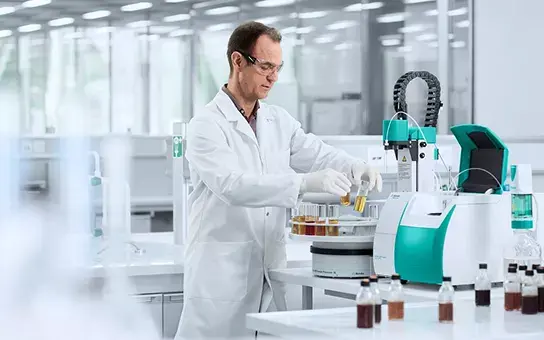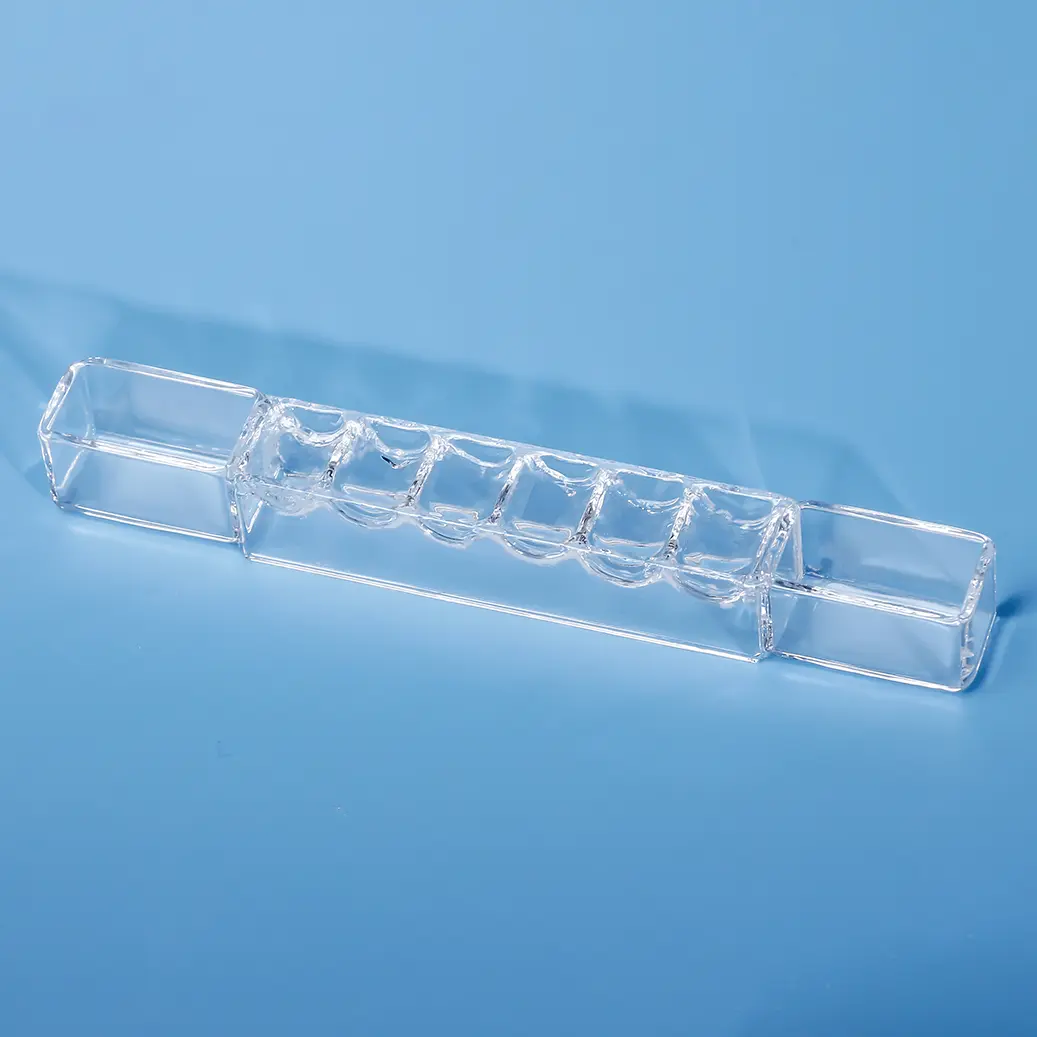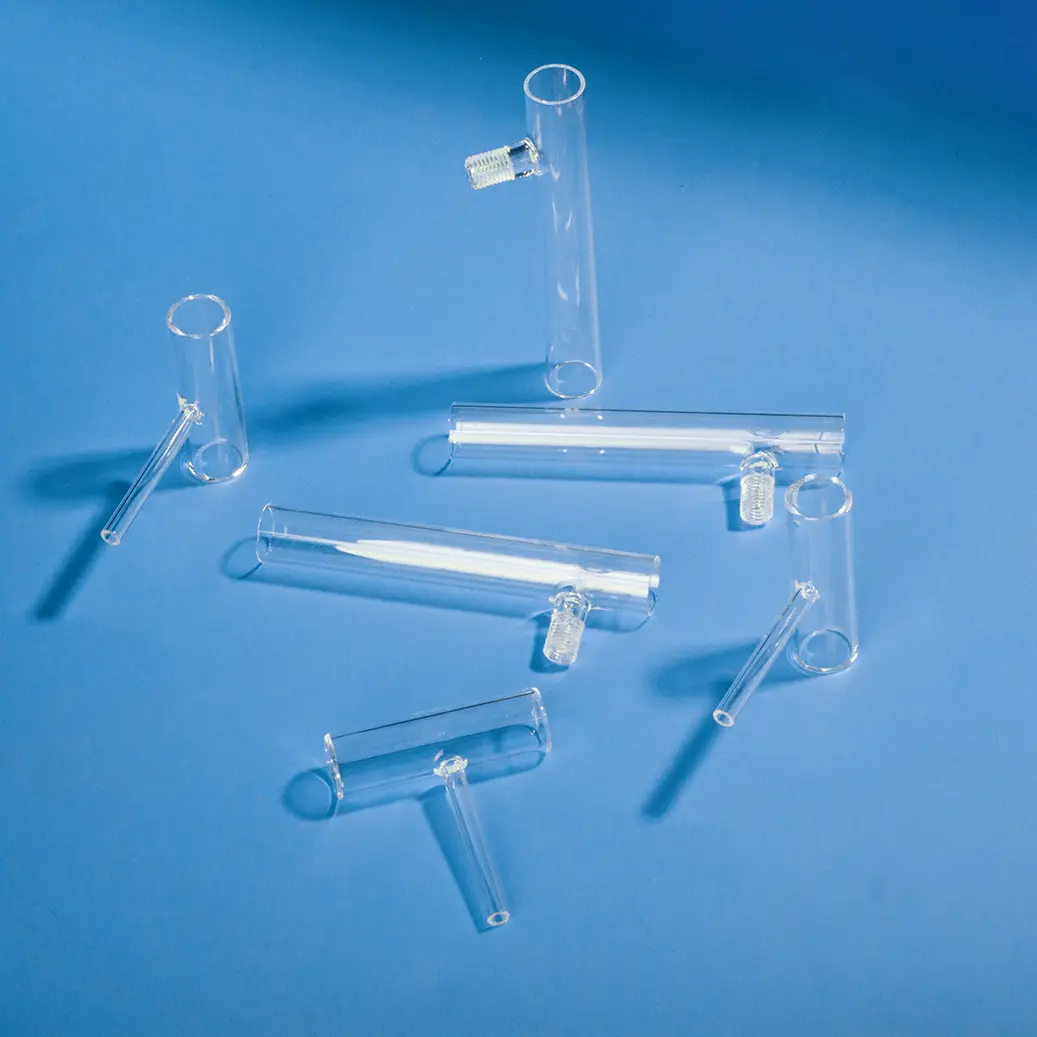A quartz branch tube reactor is a specialized reactor crafted from quartz glass, renowned for its exceptional chemical stability, high mechanical strength, and excellent optical transparency. This type of reactor is designed to facilitate chemical reactions under demanding conditions, such as high temperatures and pressures. Quartz glass is primarily composed of silicon dioxide (SiO2), which provides inherent resistance to corrosion from various strong acids, strong bases, and organic solvents. These reactors find extensive use in diverse fields like chemical analysis, biological research, and environmental monitoring. In chemical analysis, the quartz branch tube reactor acts as a highly sensitive and precise reaction vessel or detection unit, ensuring reliable and repeatable results. In biological research, it is essential for applications like PCR amplification and nucleic acid electrophoresis. For environmental monitoring, it is used to analyze pollutants in air, water, and soil samples. Key advantages include high thermal stability, superior chemical inertness, excellent optical properties (particularly in UV and IR ranges), and robust mechanical strength. However, quartz’s inherent lack of ductility and its fragile nature need to be considered during handling and operation.
| 物件内容 | 資産価値 |
|---|---|
| 二酸化ケイ素 | 99.99% |
| 密度 | 2.2×10³ kg/cm³ |
| 硬度 | 5.5 - 6.5 モース硬度 570 KHN 100 |
| 引張強度 | 4.8×10⁷ Pa (N/mm2) (7000 psi) |
| 圧縮強度 | >1.1×10⁹Pa (160,000 psi) |
| 熱膨張係数 | 5.5×10-⁷cm/cm-°C (20°C-320°C) |
| 熱伝導率 | 1.4 W/m-°C |
| 比熱 | 670 J/kg-°C |
| 軟化点 | 1730度C(3146度F) |
| アニーリングポイント | 1210度C(2210度F) |
| ストレイン・ポイント | 1120度C(2048度F) |
| 作業温度 | 1200°C |
| 電気抵抗率 | 7×10⁷Ωcm (350°C) |
| サイズ | カスタマイズ |
| ロゴ | カスタマイズされたロゴ |
Exceptional Chemical Stability
Primarily composed of silicon dioxide (SiO2), quartz glass offers outstanding resistance to corrosion from a wide array of strong acids, strong bases, and organic solvents. This makes the reactors ideally suited for diverse chemical reaction environments.
Superior Optical Properties
Quartz glass exhibits excellent optical transparency, making these reactors perfect for experiments requiring light transmission or spectroscopic analysis. Examples include photochemical reactions and spectral detection where high-quality light interaction is crucial.
High Thermal Resistance
The inherent thermal stability of quartz glass allows these reactors to withstand high temperatures, thus making them suitable for demanding chemical reactions requiring high-temperature conditions like high-temperature synthesis or pyrolysis.
Robust Mechanical Strength
Quartz glass provides significant mechanical strength, ensuring stability under high-pressure conditions and making these reactors reliable for high-pressure reaction environments.
アプリケーション・シナリオ
Analytical Chemistry
In analytical chemistry, these reactors are frequently employed as reaction vessels or detection units in techniques like gas chromatography (GC), high-performance liquid chromatography (HPLC), and atomic fluorescence spectroscopy (AFS). They offer high sensitivity, precision, and excellent repeatability for reliable quantitative analysis.
Biotechnology and Life Sciences
In biotechnology and life sciences, quartz branch tube reactors are utilized in experiments such as PCR amplification, nucleic acid electrophoresis, and cell culture. Their ability to withstand high temperatures and pressures, combined with their excellent optical transparency, allows for real-time monitoring of amplification products and cellular processes.
The typical operating temperature range for a quartz branch tube reactor is between -50°C and 1200°C. However, the precise temperature limit is contingent on the purity of the quartz glass and the specific manufacturing processes employed. High-purity quartz glass provides enhanced thermal stability, maintaining its integrity at elevated temperatures. Therefore, it is crucial to select the appropriate quartz glass grade based on your experiment’s temperature requirements and to operate the reactor within its safe operating range to prevent potential material failure or compromised performance due to excessive heat.
Proper cleaning and maintenance of a quartz branch tube reactor are essential for ensuring its optimal performance and longevity. Initially, inspect the reactor for any signs of cracks or damage prior to use. After each use, promptly clean the reactor’s interior with deionized water or a suitable solvent to prevent the build-up of residues and potential corrosion. For persistent stains or difficult to remove deposits, consider using an ultrasonic cleaner or specialized cleaning solutions. Regular inspection of the reactor’s seals and connectors is necessary to ensure they remain intact and leak-free. During storage, keep the reactor in a dry, cool, dust-free environment, shielded from direct sunlight and potential mechanical damage.
When using a quartz branch tube reactor, it is crucial to adhere to the following safety measures: Firstly, always wear appropriate personal protective equipment (PPE), such as gloves, safety goggles, and a lab coat, to protect against exposure to chemical reagents or high temperatures. Secondly, when operating under high-temperature and high-pressure conditions, verify that the reactor’s seals are tight to prevent explosions from overpressure. Additionally, strictly follow established experimental operating procedures, and avoid any sharp vibrations or impacts to prevent breakage of the reactor. Finally, take special care when handling corrosive reagents such as strong acids and strong bases, verifying the reactor’s compatibility and material resistance to chemical corrosion to avoid damage.
よくある質問
石英ガラスは硬くて脆い材料で、物理的、化学的性質が優れ、機械的硬度が非常に高く、電気絶縁性がよく、高温と耐食性に優れ、遅延性能が低く安定で、光透過性がよい。半導体、光学、電気、化学、航空宇宙、自動車などの分野で広く使用されている。硬くて脆い材料は加工が難しく、多くの分野で刃先の倒れが小さく、材料ロスが少なく、断面粗さが小さく、切断厚さ範囲が広い切断加工が急務となっている。石英ガラスの伝統的な切断方法は機械的切断、すなわち砥石切断である。非伝統的な切断方法には、ウォータージェット切断、電気化学放電ワイヤー切断、連続レーザー切断などがある。機械的切断はコストが低いが、ホイールと材料が接触するため工具の摩耗が大きく、材料が工具によって汚染されやすい。石英ガラスはエッジ崩壊、マイクロクラック、残留応力が発生しやすく、材料の強度や性能に影響する!曲線切断が難しく、研削や研磨などの後処理が必要。レーザー切断は材料に直接触れないため、接触応力がなく、複雑な曲線切断が可能です。ピコ秒レーザーは、スポット径が小さい、精度が高い、材料との作用時間が短い、作用面積が小さいなどの利点があり、硬くて脆い材料の加工に適しています。
。

